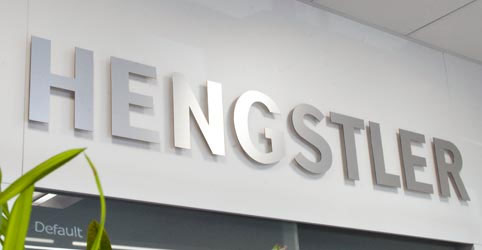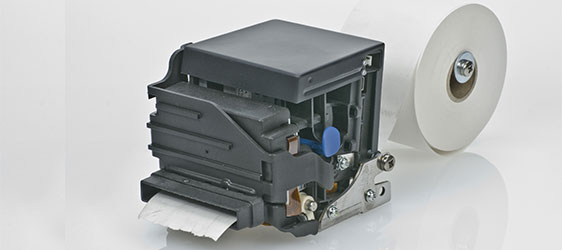
Once you’ve chosen the technology, the paper width is arguably the next most important point. How wide do you want the printout to be? For example, you can’t choose a 60 mm wide printer if you plan to print 80 mm wide paper. When possible, use the narrowest, common-width paper that you can, because narrower is generally less expensive.
Of course, your application may mandate the width; for example, if you’ll print railway tickets, you’ll have to conform to the standards for such tickets. Another factor is how easy the printout will be to read and how much information it will contain. It would be tough to put a large, detailed map of Manhattan on a 60 mm wide printout; for something like that; you’d want a full letter width (8½ inch) or A4 size printout.

Different companies generally specify the paper that their printers will handle in one of two ways. It is measured either by its weight or by its thickness because both values correlate to each other. Paper weight typically uses grams/square meter (g/sqm, g/m²). Typical receipt paper is around 55-60 g/m². Paper manufacturers prefer to specify the “caliper” of a paper by its thickness in mils (thousands of an inch) or micrometers (µm, 1 mil= 25.4 µm) because that’s what they can most accurately control in the manufacturing process (and you can more easily measure yourself). Paper thickness and weight can be converted crosswise. Example as a rule of thumb for thermal paper: 100 g/m2 → 4.3 mil or 1 mil → 23 g/m2.
Since our goal is not to give you an education on thermal paper, let us say only that thickness is usually about durability, cost and perceived value. If the printout needs to be durable, (for example, if the user will put it in their pocket to pull out and show later), it should be somewhat thicker. Exactly how thick depends upon how the printout will be handled. Thinner paper is generally less costly, but paper that is too thin tends to jam the printer more easily. Around 50-60 g/m² seems to be the norm for thinner paper. Finally, certain types of printouts are perceived as having intrinsic value, and that value depends upon the “feel” of the paper.
We’ve talked about paper above, but the printout could be other materials, as well. Ski lift tickets or water park passes are sometimes made from a plastic-like tag material to be resistant to water. Maybe your application needs to print labels; if so, how will the liner (the waxy backing on which they are mounted) be removed? Perhaps linerless label material is the preferred material; if so, make certain that the printer you select can print and cut it.
Should you select roll paper or fan-fold? Roll paper is continuous and less expensive, but the printer must be able to pull the roll if it is large. When using fan-fold paper, the printer never has to pull more than a few ticket’s worth, so it doesn’t need to be as strong. However, due to the perforations present at the fold, the paper must be positioned within the printer to not print across the folds. This requires the use of positioning technique, like black mark or hole mark sensing, to position the paper after each printout and prior to cutting. A word of caution; if your printer must cut fan-fold paper always cut slightly after the fold! Cutting before the fold causes a flap on the leading edge of the next printout that can cause paper jams. Cutting exactly on the fold is also problematic, since the fold itself softens the paper, making it more difficult to cut.
As mentioned above, as the paper roll gets larger, it gets more difficult for the printer to pull. But once it reaches a certain size, there’s an additional problem; inertia, also called momentum. The crux of the problem is this; there is generally some slack paper between the roll and the printer. Once printing begins, this slack is taken up and the paper becomes taut. At that instant, the paper roll must accelerate from not moving to matching the print speed. This will happen in zero time, so the paper usually slips, causing vertically compressed images and characters look like they’re crushed. Once the paper roll gets turning up to speed, the problem goes away… until the next printout. What is needed is a way to accelerate the paper roll before the slack paper is printed. This is usually accomplished by a device called a “dancer bar” (named for the way it dances up and down during printing) or “inertia dampener”. The paper is threaded under a spring-loaded or weighted horizontal bar. As the printer takes up the slack paper, the bar pushes down, gradually applying more force to the paper roll and starting it moving. By the time the slack is gone, the paper roll is already turning at printing speed and there is no sudden jump in speed needed. The reverse problem also occurs when printing stops, (the paper roll keeps turning, producing slack paper like toilet paper pulled off the roll too fast), but it is easily addressed by adding a little friction to the spindle. If you are printing a paper roll over, say, six inches in diameter, you may need a dancer bar. Check with the printer manufacturer and be sure to allow room for it inside your kiosk.
The HENGSTLER team is expert in matching printers to the application. Whether it’s gas pump receipts, bank statement printers, railway ticketing systems, kiosks, fire alarm systems, or just about anything else, we’ve seen it and can help locate and integrate the best-suited printer for the purpose needed. Moreover, we can support our customers effectively by offering tailor-made application projects. Contact us today with your application or challenge